
TNO launches Motion Comfort Institute for automated vehicle era
Automated vehicles are rapidly moving from test tracks to public roads, transforming drivers into passengers. This shift puts more urgency on an centuries old challenge: motion sickness. While currently affecting some passengers, research shows it could impact up to 60% of automated vehicle occupants. To address this growing concern, TNO brings together decades of expertise from multiple research domains under the new Motion Comfort Institute, ensuring comfortable journeys in tomorrow's vehicles.
Understanding motion sickness in modern mobility
Motion sickness occurs when there's a mismatch between what your balance organs sense and what your eyes see. 'Anytime that your body's like, oh, something's not right, my eyes aren't agreeing with what my butt is feeling, you end up with the possibility of motion sickness', explains Magnus Moore, Business Developer at TNO's Motion Comfort Institute.
This age-old problem—documented since ancient times when people rode camels—takes on new urgency with automated vehicles. Currently, only 24% of drivers experience motion sickness compared to 62% of passengers. The reason is simple: drivers anticipate their own actions.
'The problem with automated vehicles is that the driver is going to become a passenger', Magnus notes. Electric vehicles compound this challenge with their high torque creating unfamiliar sharp accelerations.
'Motion sickness is the number one reason people don't get on ships', Magnus points out. 'If we don't solve this, it could be the kind of thing that stops people using automated cars.' With 80% of current journeys involving just the driver, it becomes clear that motion comfort challenges are less of an issue now, but will become more serious.
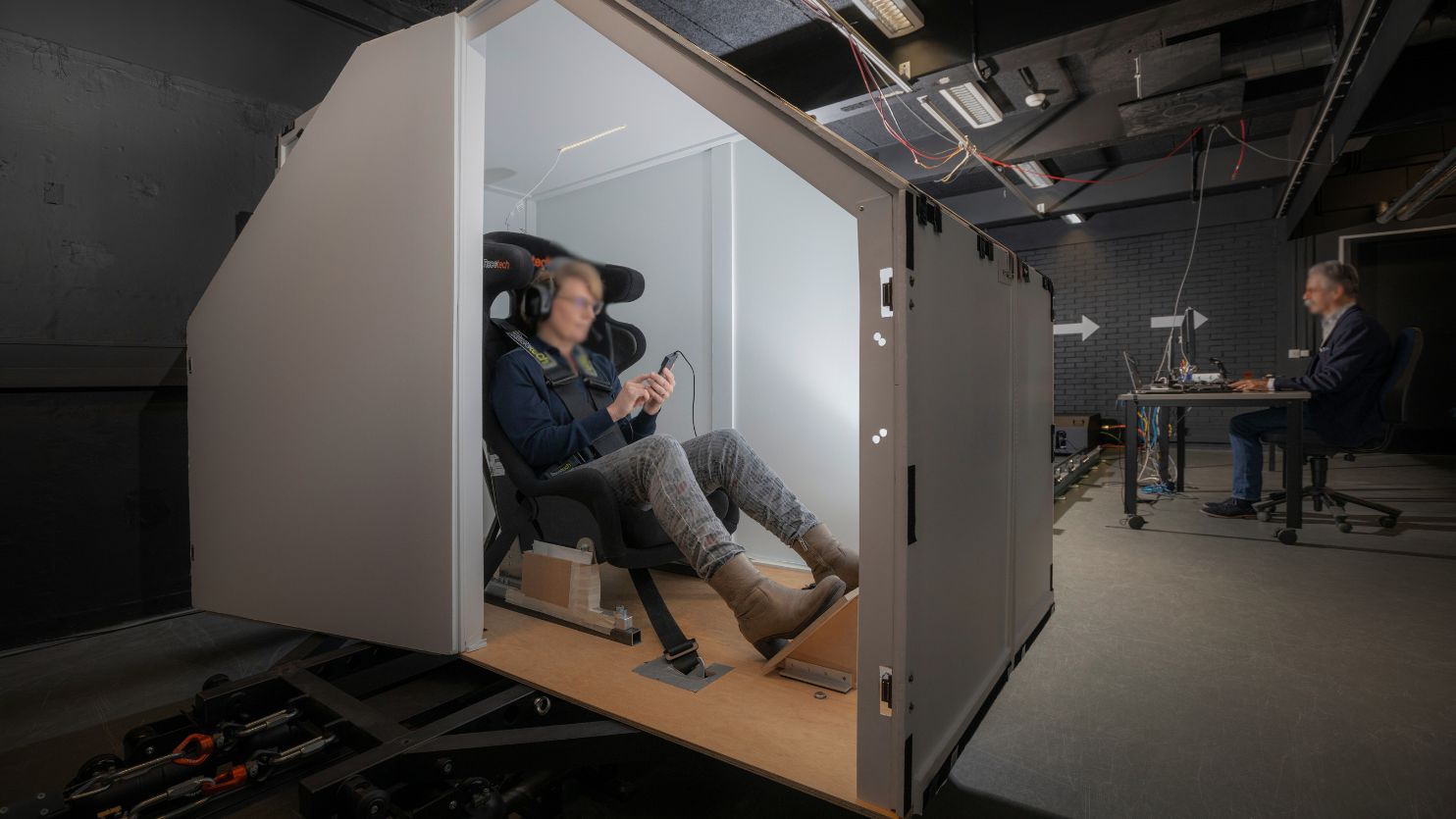

'Only 24% of drivers experience motion sickness compared to 62% of passengers. The reason is simple: drivers anticipate their own actions.'
TNO's Motion Comfort Institute: A coordinated research powerhouse
As an offspring initiative of the rich human factors expertise and facilities in Soesterberg, the new Motion Comfort Institute combines decades of defence research on human performance with cutting-edge automotive applications.
'We've got facilities which allow us to do fundamental research to understand what causes the problem, how can you detect it, and how can you solve it', Magnus explains. This comprehensive approach leverages unique research infrastructure and a team of over 100 experts, covering a wide range of human factors topics, that sets TNO apart globally.
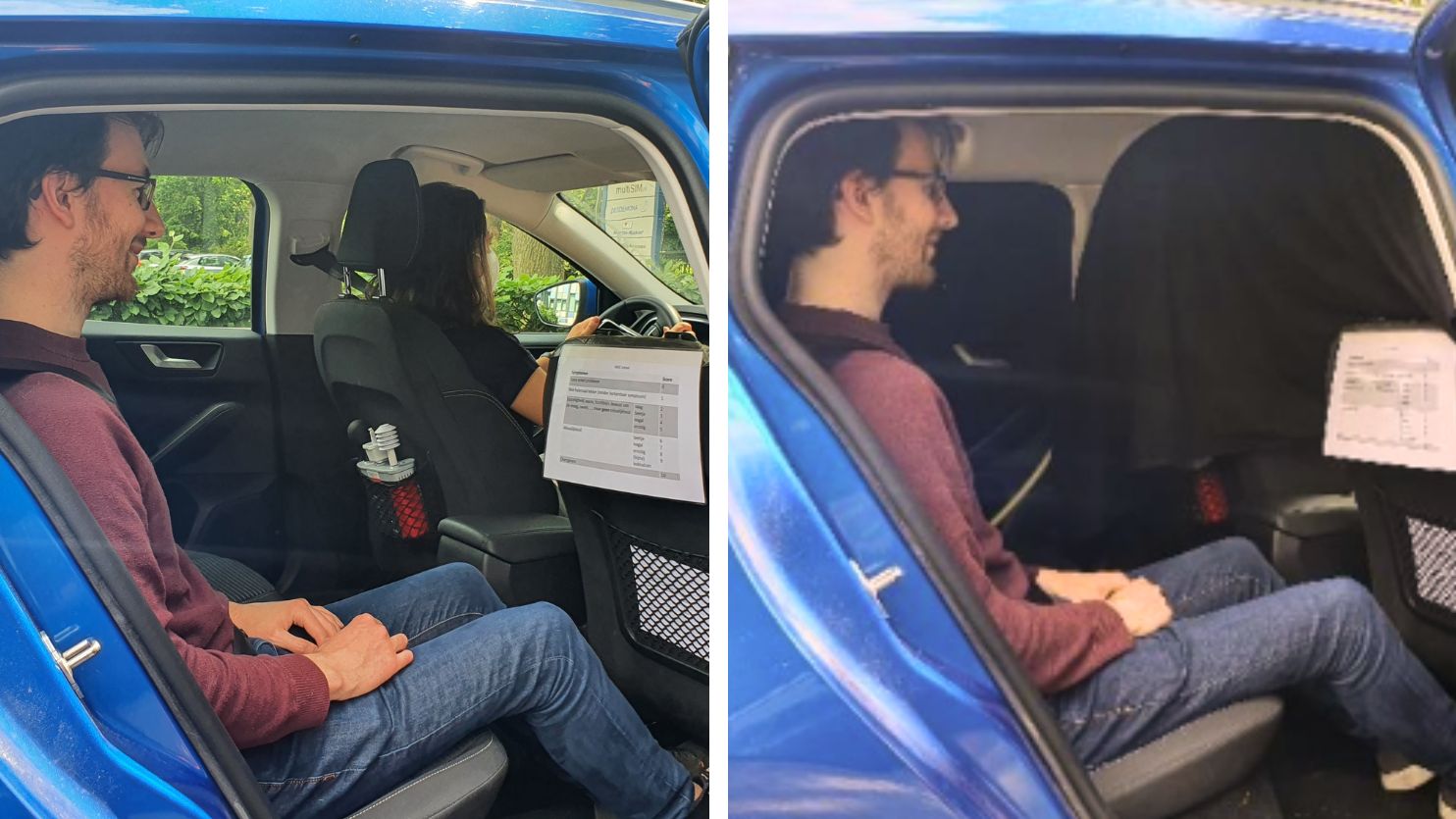
Research foundation: What causes, detects, and solves motion sickness
TNO's research strategy addresses three fundamental questions:
1. What causes motion sickness?
The Desdemona simulator serves as the centerpiece for understanding motion-induced discomfort. As the world's only six-degrees-of-freedom centrifuge-based motion simulator, it can subject participants to any conceivable driving, flying, or sailing motion in controlled conditions.
Complementing Desdemona, a 40-meter linear track examines horizontal acceleration effects, that is critical for understanding car movements that for instance ships don't experience. Real-world validation happens on a military test track and on public roads between Soesterberg and Amersfoort, where researchers test findings in actual driving conditions.
'A lot of the work we've been doing is defining which motions in your car are going to cause a problem', Magnus explains. While maritime models focus on vertical motion, cars move in six degrees of freedom—forward, backward, sideways, rotation, and tilting in multiple directions. TNO has developed new models that capture this complexity, going beyond traditional ISO standards.
2. How to detect motion sickness?
Future vehicles must recognise passenger discomfort without asking. TNO researchers have developed the MISC (pdf) scale (Motion Illness Symptoms Classification) for research settings, but commercial applications require non-contact solutions.
'We're only looking at options which are visual or thermal, but no contact,' Magnus clarifies. The research explores biomarkers including heart rate variation, skin temperature changes, and gaze patterns. All measurable through cameras and sensors already being integrated into vehicles for safety monitoring.
3. How to prevent and solve it?
Solutions span from immediate interventions to long-term vehicle design:
- Motion cueing: Seat vibrations or visual cues prepare passengers for upcoming movements;
- Active suspension: Systems that decouple passenger experience from road irregularities;
- Route optimisation: AI-powered navigation selecting paths that minimise nausea-inducing movements;
- Adaptive driving modes: Vehicle behaviour that adjusts when detecting passenger discomfort.
'Within the next 5 years, we're going to see automotive manufacturers actively designing their cars to reduce motion sickness,' Magnus predicts.
Interested in exploring how TNO's Motion Comfort Institute can help address motion comfort challenges in your industry? Contact our experts to discuss collaboration opportunities.
Get inspired
How is YER award winner Chris van der Ploeg doing?
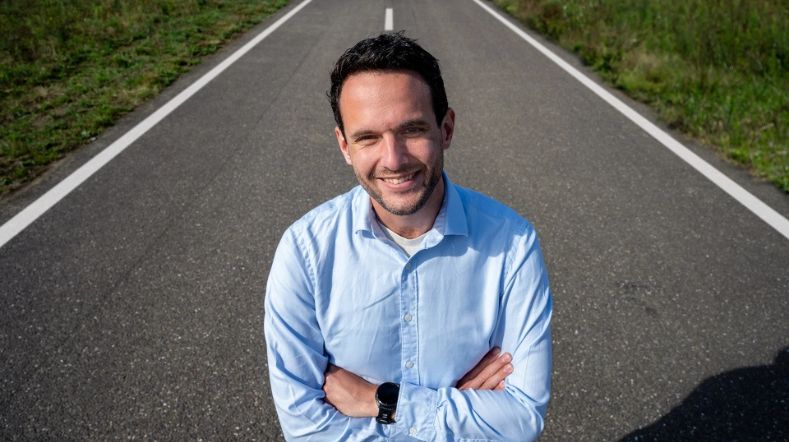

Releasing autonomous software faster with DeepScenario and TNO’s StreetWise
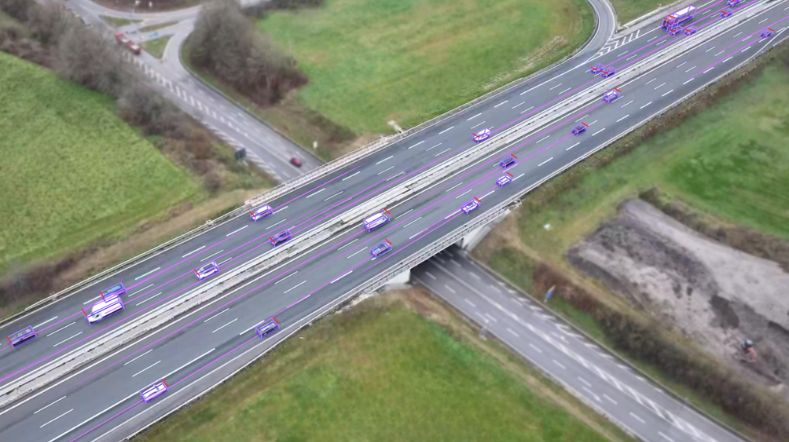

MARQ opens its doors: a place to collaborate on the mobility of the future
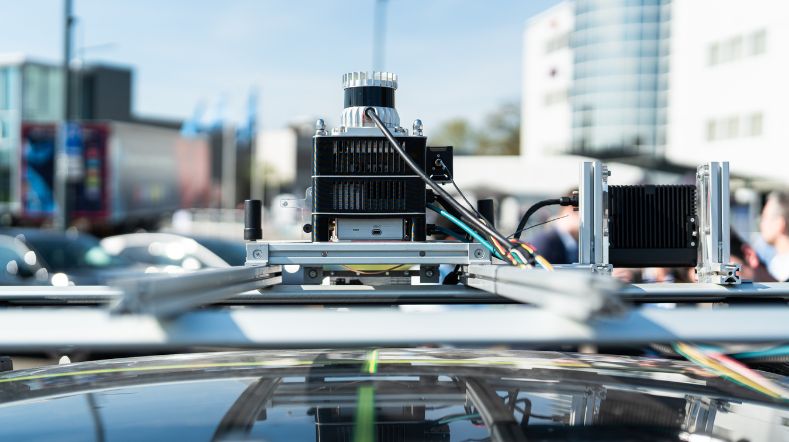

Demonstrations of automated driving and charging for logistics at Maasvlakte
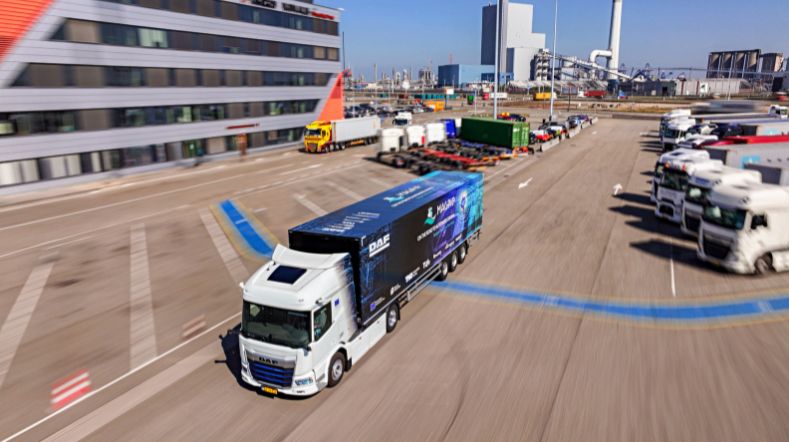

Getting on board with autonomous transport? Five things you need to know


